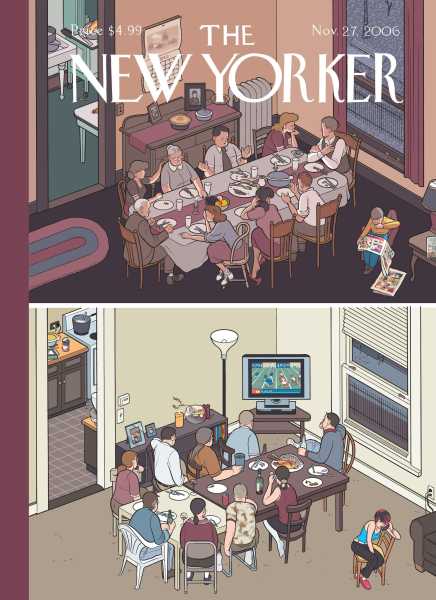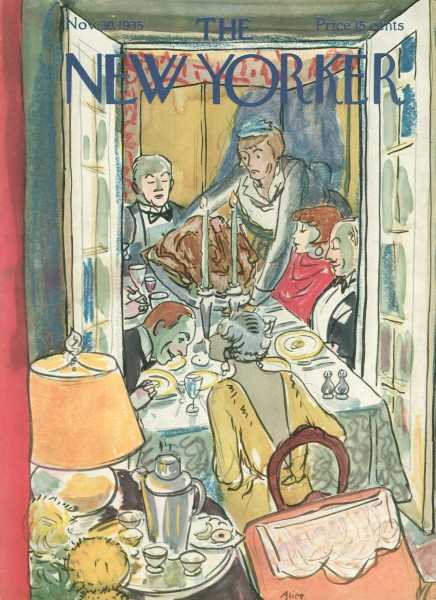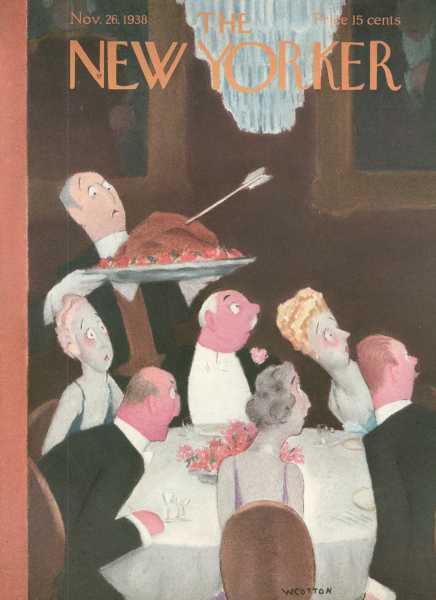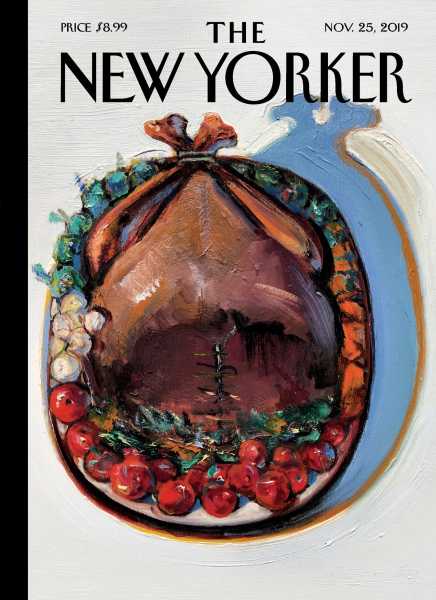
Save this storySave this storySave this storySave this story
This Thursday, dining tables and social-media feeds across the country will be brimming with Thanksgiving feasts; Americans will snap pictures of everything from their perfectly arranged spreads to the messy—but strategically lit—leftovers of good times had, captioning their posts with personal reflections on gratitude and belonging, or with recaps of dinner-table debates as to whether the squash-and-onion tart or the sweet-potato-and-pecan pie stole the show. For the cover of the November 27, 2023, Personal History themed issue, the cartoonist Chris Ware captures this special (if sometimes stressful) time of year when everyone comes together to make and share memories, depicting one Thanksgiving crew in the moment between the making and the sharing of those memories. I spoke to the artist about his thoughts on living in the moment, not living in the moment, and (mis)remembering those moments every which way.
What is the place of personal history in your fictions?
Probably about the same as the place that accurate memories take in my own life; I’m appalled at my ability to completely misremember events, and edit out all the stupid things I do and say in any public circumstance. Writing and drawing fiction is at least a way of accounting for such missteps without, hopefully, offending any friends or family. However, according to some self-help op-eds of the past few years, the Thanksgiving table is also apparently the number one forum for saying dumb things we’ll later regret—or at least the number one forum for warm human beings sitting next to each other to say dumb things they’ll later regret, since there are plenty of outlets for doing that during the rest of the year (that thing formerly known as Twitter, for instance).
How do you think carrying around phones with cameras has affected the construction of our memories?
Given that accounts of all the unspeakable horrors of the world are always only a swipe away—like the articles that coexist with the cartoons in the pages of this magazine—we’re always making a choice as to what to look at or say or think about, apportioning whatever amount of acknowledgement to a topic seems appropriate or polite before cautiously moving on to something else.
It took me a while to notice the new ritual that happens after most dinners or gatherings nowadays, when phones come out and everyone starts going through the photos and videos they took, deleting and editing and sharing them. I say “took me a while to notice” only because I realized I was doing exactly the same thing: constantly trying to edit life into something that looks like the perfect representation of happiness. And I think it has contributed to the fact that I can’t ever seem to live in the moment; I spend most of my life in a state of suspended anxiety, regret, and worry, realizing days or weeks after whatever dinner or trip or vacation I’d handwringingly sweated through that I had actually had a pretty good time. Informal surveys of friends suggest I’m not alone in this. (This is not to say I don’t also immediately delete photos where I look like a chinless slob.)

Characters in this cover also appear in a Thanksgiving cover suite you did many years ago, showing that some of your fictional characters have aged in real time. Do you have any characters who never age?
Two of them, the father and his daughter at the opposite ends of the table, indeed appeared in 2006 and in a few strips thereafter in the pages of this magazine. I had no plans for them to live on, they just did. Characters who don’t age, like my childhood self, are a completely different animal, but they still change and shift around. I think this state of constant flux has got to be similar for everyone, since writing and drawing are really just versions of remembering.
For more Thanksgiving covers, see below:

“November 30, 1935,” by Alice Harvey

“November 26, 1938,” by William Cotton

“Stuffed,” by Wayne Thiebaud
Find Ware’s covers, cartoons, and more at the Condé Nast Store.
Sourse: newyorker.com